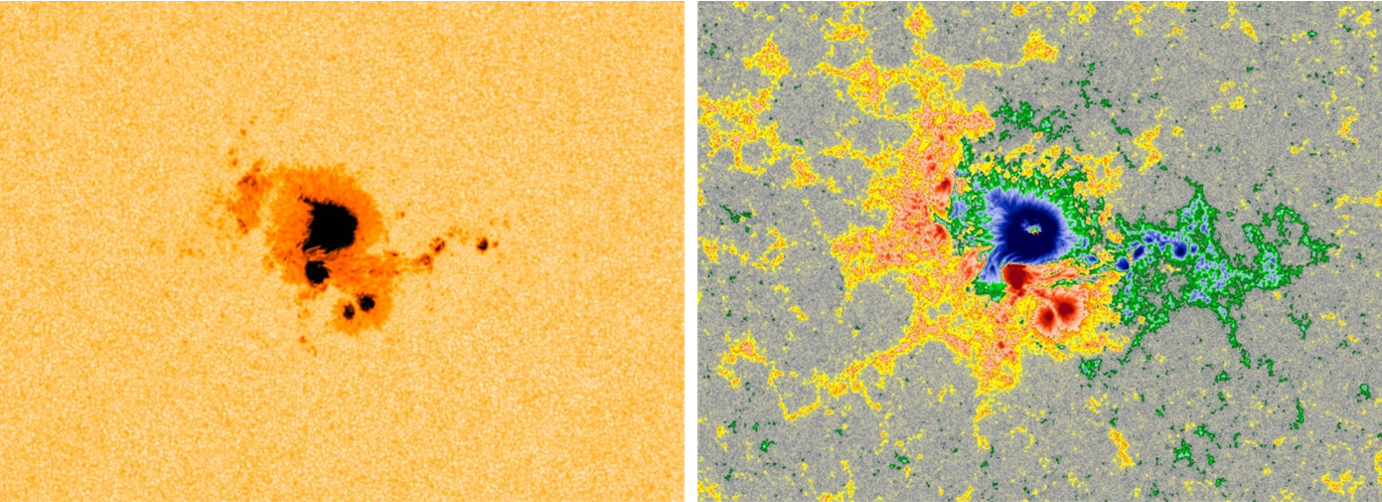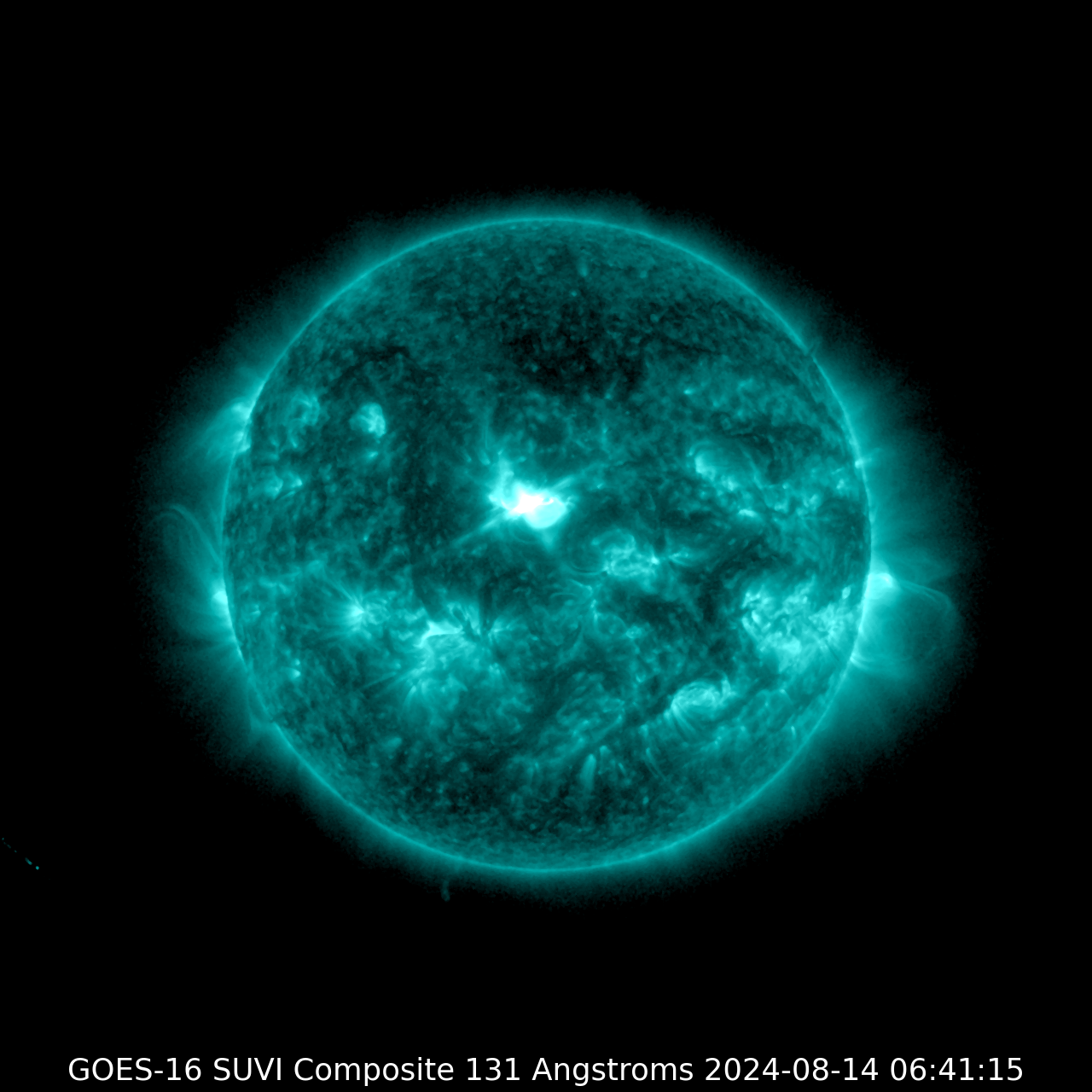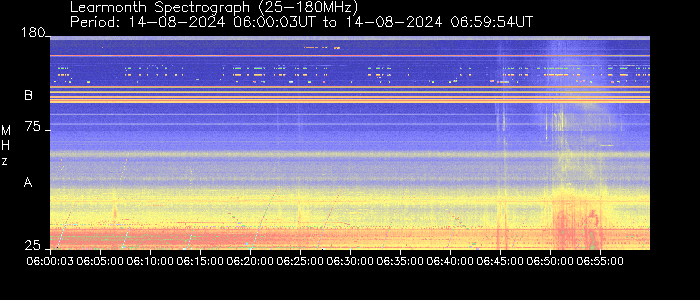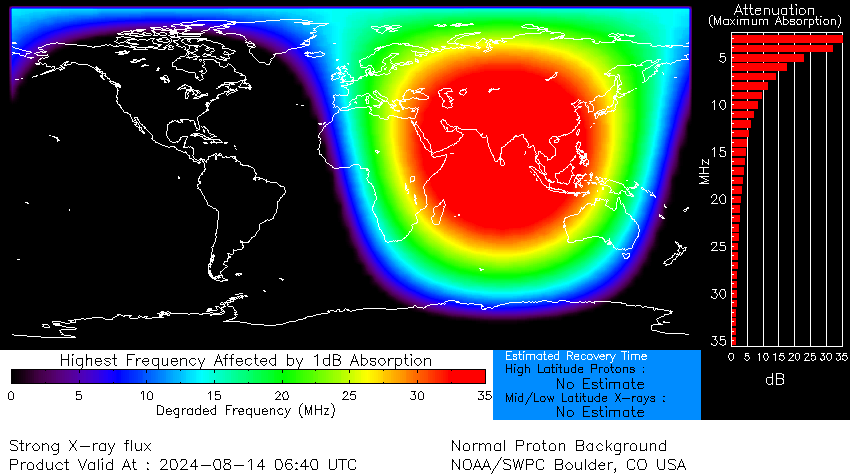NOAA 3784 has already been on the solar disk for a week. For most of that time, it was visible as a naked eye group (using eclipse glasses) and -since 11 August- contained also a strong delta magnetic configuration (Mount Wilson classification scheme). Yet, it was only today 14 August that this active region produced an X1.1 flare, peaking at 06:40UTC. The imagery underneath shows the sunspot group at 08:45UTC in white light (left) and its magnetic structure (right), with blue and red indicating opposite magnetic polarities.


The X1 flare was a long duration event, lasting from 06:00 to 07:08UTC (GOES). A GOES/SUVI image portraying the flare in extreme ultraviolet can be found above. The SIDC forecaster wrote that "... Type II and Type IV radio emissions were associated with this event. Coronagraph imagery is not yet available and will be analyzed for any associated Coronal Mass Ejection (CME). The 10 MeV proton flux is at background levels. Further isolated X-class flares remain possible." A radio sprectrogram from the event was recorded by the Learmonth observatory in Australia, and displayed underneath.

Space weather effects from this X-class flare was limited to some minor disturbances of HF Com on the Earth's dayside (DRAP ; map underneath), affecting mainly Russia, China, southeast Asia, the Arabian Peninsula, East-Africa, and the Indian Ocean. An advisory to the civil aviation for disturbed HF Com (High Frequency Communications) from the solar flare has been sent by PECASUS/China Russia Consortium. Further updates on any associated CME and its potential geomagnetic impact can be found on the SIDC website.






